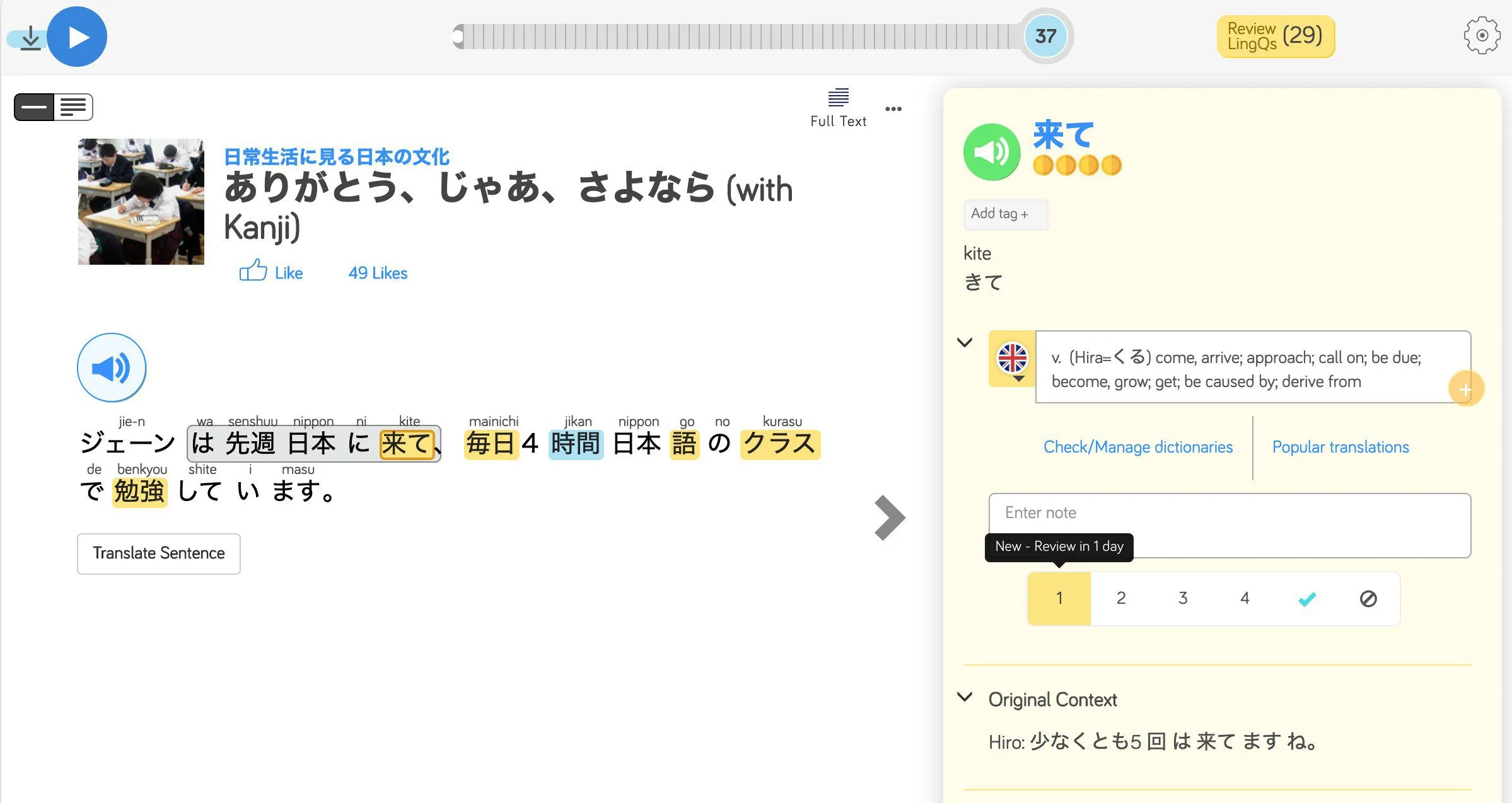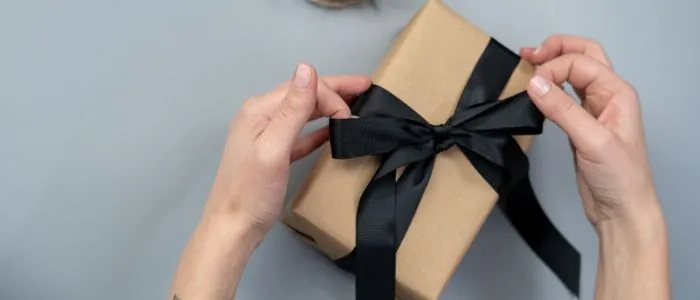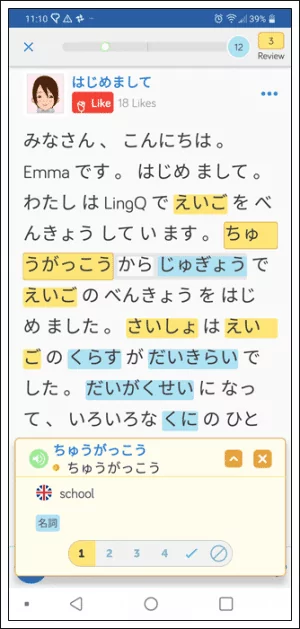Saying Thank You in Japanese
Imagine that someone did something nice for you. So, what would you say? Thank you, of course.
The answer seems pretty straightforward until you consider all the variations you can use: Thanks, thanks a lot, thank you so much, thanks a million and the list goes on. So if you want to say ‘thank you’ in Japanese, you also need to know the variations and when different phrases fit and when they don’t.
So in this post we’ll go over how to say thank you in Japanese. We’ll talk about social context and structure as well as how to thank someone for a specific action.
The Very Versatile Arigatō (ありがとう)
If you’ve studied Japanese, then you’ve probably already heard the word arigatō before. When expressing gratitude in Japanese, you’ve got to know this word. By itself, arigatō is used mostly with family and friends.
ありがとう ‘Thank you’
arigatō
Arigatō is a very old word in Japanese and has kind of odd etymology when you dig into it. The first part ari comes from the word aru (ある) meaning ‘to be/to exist.’ The second part gatō is from an old word meaning ‘difficult’. So saying arigatō means that you’re acknowledging that some uncommon or difficult occurrence has happened.
The phrase arigatō is almost always written in hiragana. However, there is a kanji version 有り難う (arigatō) although you’re unlikely to see it very often.
Adding on – Arigatō Gozaimasu (ありがとうございます)

By itself the word arigatō is great for thanking friends and family, but for more formal situations you should use arigatō gozaimasu. This conveys a stronger sense of politeness and should be used in formal settings. It’s hard to really translate the different sense that arigatō gozaimasu gives, but you should understand that it’s important.
Arigatō Past and Present
You may have noticed that the phrase arigatō gozaimasu has the -masu ending for verbs in the present tense. At the same time, the phrase may be put in the past tense with -mashita.
ありがとうございました
Arigatō gozai-mashita
So what’s the difference?
You use arigatō gozaimasu for a current action and arigatō gozaimashita for a completed action.
Let’s say that someone lends you their bike for the day. You’d say arigatō gozaimasu when accepting the bicycle. But, when you give it back, you should say arigatō gozaimashita since the action (your borrowing) is over.
So if someone helped you out, gave you instructions or did anything that is completed you should say arigatō gozaimashita.
今日はありがとうございました ‘Thank you for today’
kyō-wa arigatō gozai-mashita
Learn Japanese the Fun Way!
On LingQ you can learn Japanese from anything: YouTube videos, Netflix shows, new stories, blog posts, song lyrics and more. If you can find it online, you can make a LingQ lesson with it.
There are also tons of lessons in the LingQ Japanese Library. This one will help you with saying thank you in Japanese. Become a LingQ member today to see it in the reader and translate words and phrases as you read.

Adding on to Your Gratitude
When you want to add some extra energy to your thank you, you can add a few words to show that you really mean it.
The most common of these is hontō-ni (本当に). This translates to ‘truly / really’ and is used to emphasize gratitude. Just remember that it goes before the word arigatō.
本当にありがとうございます ‘Thank you so much/sincerely’
hontō-ni arigatō gozaimasu
Another word you can use to add to your thanks is dōmo. You might even recognize it from the Styx song ‘Mr.Roboto.’ As a phrase dōmo arigatō expresses a strong and hearty thanks to the listener.
どうもありがとう ‘Thank you very much’
dōmo arigatō
Saying Thank You in a Japanese Store (Makoto-ni)
Since Japanese culture puts a premium on understanding and expression social relationships, there another form of thank you that you should be aware of. This involves the words makoto-ni.
誠にありがとうございます ‘Thank you very much’
Makoto-ni arigatō gozai-mashita
You will almost exclusively hear this in Japanese stores and some workplace situations . And while you may not ever need to say it yourself, it’s always good to know what people are saying to you when you leave a department store.
Saying Thank You for Things in Japanese

Of course, at some point you’ll probably want to be more specific and point out what your thanking someone for. Thankfully, this is very easy to say. You just need to put what you’re thanking your listener in front of the word arigatō.
Thing + arigatō
手紙、ありがとう ‘Thank you for the letter’
tegami arigatō
プレゼント ありがとう ‘Thank you for the present’
purezento arigatō
Thanking Someone for Actions
We’ll also need to thank people for something they’ve done. Doing this is a bit more tricky and involves three parts. For this construction, you’ll need to put the verb in the te-form. This is followed by the word kurete (くれて) and then the word arigatō.
VERB-te + kurete + arigatō
手伝ってくれてありがとう ‘Thank you for helping’
Tetsudatte kurete arigatō
来てくれてありがとう ‘Thank you for coming’
Kite kurete arigatō
Of course to increase the formality, you can always add gozaimasu or gozaimashita at the end.
来てくれてありがとうございます ‘Thank you for coming’
Kite kurete arigatō gozaimasu
Informal Thank You in Japanese
You won’t always need to say a big thanks to the people around you. With close friends and family, you can use more quick and simple expression to say ‘thank you’ in Japanese.
Dōmo (どうも)
This is the same dōmo as that in dōmo arigatō and by itself dōmo can also express gratitude. In this form, it roughly translates to a simple ‘thanks.’ As such, you should only use it in informal situations.
Borrowing from English – Sankyū (サンキュー)
When people are being really cute they might say sankyū. The expression comes from the English ‘thank you’ but people only use it as a slang term.
What’s fun about sankyū is that you can see it written in several ways. The first part san sounds like the number 3 and kyū is the name of the letter and the number 9. So you might see it written in a number of ways.
39 sankyū ‘thanx’
3Q sankyū ‘thnx’
三8 sankyū ‘thx’
There you have it – How you can say thank you in Japanese. Of course, there are a few more forms for saying thank you in Japanese, but this will give you a great starting point. So go forth and show your gratitude!
Learn Japanese Faster with the LingQ App
With the LingQ app you can import videos, podcasts, and much more and turn them into interactive lessons
Keep all your favourite Japanese content stored in one place, easily look up new words, save vocabulary, and review. Check out our guide to importing content into LingQ for more information.

LingQ is available for Android and iOS. Gain access to thousands of hours of audio and transcripts and begin your journey to fluency today.
Enjoyed this post? Check out polyglot and LingQ cofounder Steve Kaufmann’s blog post to learn about the similarities and differences between learning Korean vs Japanese!
***
John Melnyk is a freelance writer and translator from Florida, USA living in the Netherlands. He has a masters degree in Linguistics and Communication and is currently working on his first novel.


